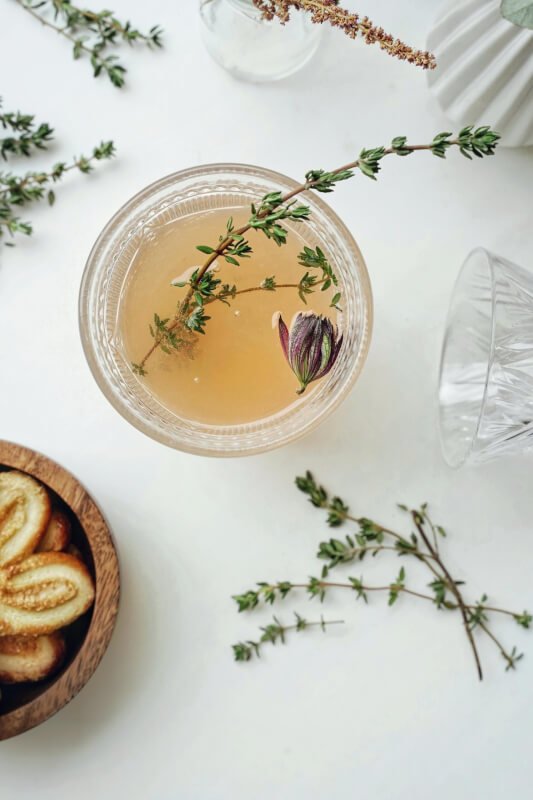Are you tired of brewing herbal teas that lack flavor or potency? Look no further! In this article, you will discover the best methods for achieving that perfect cup of herbal tea. Whether you prefer a refreshing mint blend or a calming chamomile infusion, we’ve got you covered. From steeping times to water temperatures, we will guide you through the steps to ensure that every sip is a delightful and rejuvenating experience. Get ready to unlock the secrets of brewing the best herbal teas, one cup at a time!
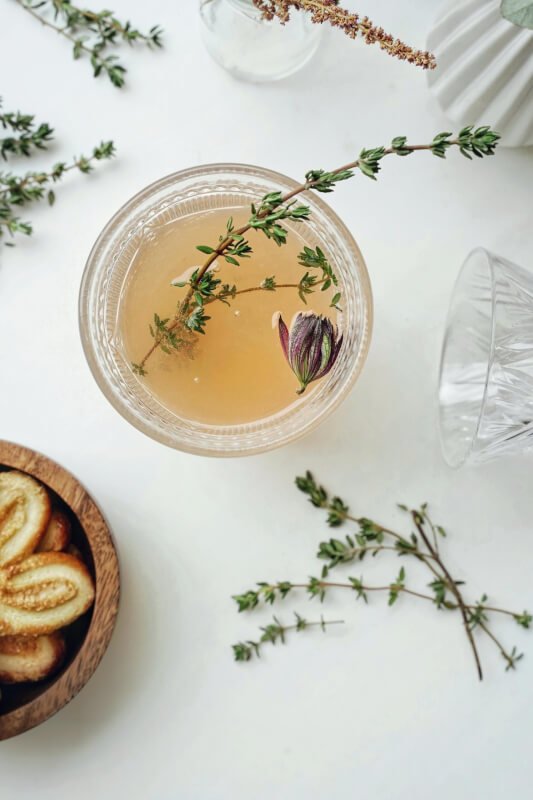
Choosing the Right Tea Leaves
When it comes to brewing a delicious cup of herbal tea, the first step is choosing the right tea leaves. High-quality herbs will ensure that you can enjoy the full flavor and aroma of your favorite blend. So, how do you select the best herbs?
Selecting High-Quality Herbs
To ensure that you are using high-quality herbs, it is important to do some research and choose a reputable supplier. Look for herbs that are grown organically, as this will ensure that they are free from harmful pesticides and chemicals. Additionally, opt for herbs that have been harvested at the peak of their freshness to ensure the best flavor.
Determining Freshness
When selecting herbs, pay attention to the appearance and aroma. High-quality herbs should have vibrant colors and a strong, fragrant smell. Avoid herbs that appear dull, have been crushed, or have a stale odor. Freshness is key in brewing a delicious cup of herbal tea.
Considering Organic Options
Choosing organic herbs is not only beneficial for your health but also for the environment. Organic herbs are free from synthetic fertilizers and pesticides, which can have harmful effects on both the ecosystem and your body. By opting for organic options, you can enjoy a cup of tea that is not only delicious but also free from harmful chemicals.
Preparing the Tea Leaves
Now that you have selected the perfect tea leaves, it’s time to prepare them for brewing. Properly preparing the herbs will ensure that their flavors and aromas are fully released during the steeping process.
Washing the Herbs
Before using the herbs, it is recommended to wash them thoroughly. This step removes any dirt or residue that may be present on the leaves. Simply rinse the herbs under cool water and gently pat them dry with a clean towel. This will help to enhance the cleanliness and quality of your herbal tea.
Grinding or Crushing the Herbs
Depending on the type of herbs you are using, you may need to grind or crush them before brewing. This step releases the flavors and aromas locked within the leaves, enhancing the taste of your tea. You can use a mortar and pestle or a coffee grinder to crush or grind the herbs to your desired consistency.
Measuring the Tea Leaves
To achieve the perfect balance of flavors, it is important to measure the tea leaves accurately. Too much or too little tea leaves can result in an imbalanced brew. Use a kitchen scale or measuring spoon to measure the desired amount of tea leaves. This will ensure that you get the perfect cup of herbal tea every time.

Water Temperature and Quantity
The temperature and quantity of water used when brewing herbal tea play a crucial role in extracting the flavors and aromas from the tea leaves. Understanding the ideal water temperature and quantity will help you achieve the perfect cup of tea.
Identifying Ideal Water Temperature
Different types of herbal teas require different water temperatures for optimal brewing. It is important to read the instructions provided with the tea leaves or consult a brewing guide to determine the recommended water temperature. Follow these guidelines closely to avoid over or under brewing your tea.
Determining Quantity of Water
The quantity of water used affects the strength and flavor profile of your herbal tea. As a general rule of thumb, use one cup of water for every teaspoon of dried tea leaves. However, you can adjust the quantity of water according to your personal preference. Experiment with different ratios to find the perfect balance of flavors that suits your taste buds.
Steeping Time
The steeping time, or the duration for which the tea leaves are left in hot water, is essential for extracting the flavors and health benefits from the herbs. Understanding steeping time variations and the factors that affect it will help you brew a well-rounded cup of tea.
Understanding Steeping Time Variations
The steeping time can vary depending on the type of herbal tea you are brewing. Delicate herbal teas, such as chamomile or mint, may require a shorter steeping time of around 3 to 5 minutes. On the other hand, robust herbal teas like hibiscus or licorice root may require a longer steeping time of 5 to 7 minutes. Refer to the instructions provided with the tea leaves or consult a brewing guide to determine the optimal steeping time.
Factors Affecting Steeping Time
Several factors can affect the steeping time of herbal teas. The size of the tea leaves, quantity of leaves used, and the water temperature can all influence the brewing process. Additionally, personal preference plays a role in determining the steeping time. You can experiment with shorter or longer steeping times to adjust the strength and flavor of your tea to your liking.
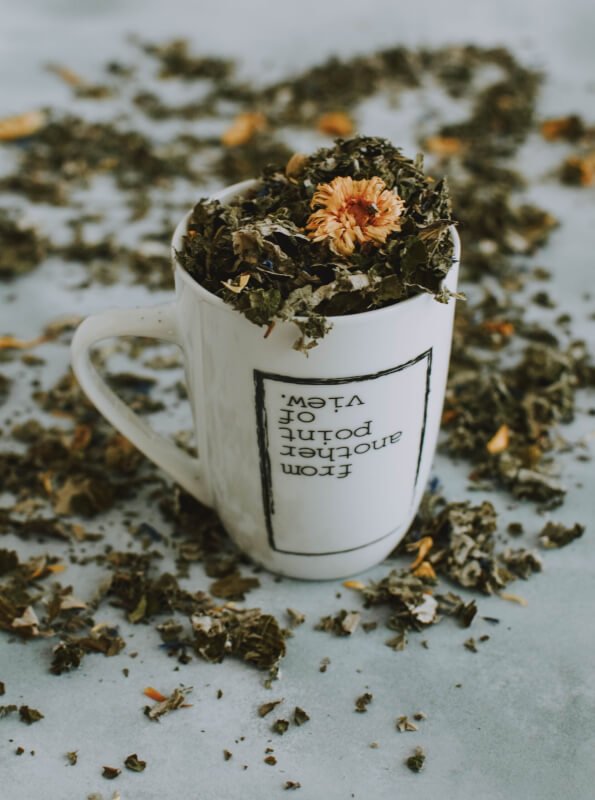
Infusion Techniques
Once you have prepared the tea leaves and determined the water temperature and quantity, it’s time to choose the infusion technique that suits your preference. There are several methods you can use to infuse the tea leaves in hot water.
Using a Tea Infuser
A tea infuser is a convenient and popular option for brewing herbal tea. Simply place the desired amount of tea leaves in the infuser, and then immerse it in hot water. Allow the tea leaves to steep for the recommended amount of time before removing the infuser. This method ensures that the herbal tea is free from loose leaves, making it easy and enjoyable to drink.
Making a Tea Bag from Scratch
If you prefer a more traditional approach, you can make your own tea bag using a coffee filter or muslin cloth. Place the desired amount of tea leaves in the filter or cloth, and then tie it securely with a string. Immerse the tea bag in hot water and allow it to steep for the recommended amount of time. This method provides convenience and allows for easy disposal of the used tea leaves.
Utilizing a Tea Pot or Tea Ball
Using a tea pot or tea ball is another popular method for brewing herbal tea. Simply place the tea leaves in the tea ball or tea pot’s infuser compartment, and then pour hot water over it. Allow the tea leaves to steep for the recommended amount of time before removing the tea ball or strainer. This method is ideal for brewing larger quantities of herbal tea and is often used for serving multiple people.
Water Quality
The quality of water used when brewing herbal tea can significantly impact the flavor and aroma of the final brew. Choosing the right water source is essential for a high-quality cup of tea.
Choosing Filtered or Spring Water
Using filtered or spring water is recommended for brewing herbal tea. These water sources are free from impurities and provide a clean, neutral base for your tea. Filtered or spring water allows the flavors of the tea leaves to shine through without any interference from unwanted flavors or minerals.
Avoiding Tap Water
Tap water often contains chlorine or other chemicals that can alter the taste of herbal tea. Additionally, the mineral content in tap water can affect the brewing process and result in an imbalanced cup of tea. To avoid any unwanted flavors or inconsistencies, it is best to avoid using tap water when brewing herbal tea.
Considering Mineral or Distilled Water
While filtered or spring water is the preferred choice for brewing herbal tea, some tea enthusiasts may opt for mineral or distilled water for specific varieties of tea. Certain types of tea, such as green tea or white tea, may benefit from the mineral content in the water or require a soft, pure base provided by distilled water. However, it is important to note that using mineral or distilled water may not be necessary for everyday herbal tea brewing.
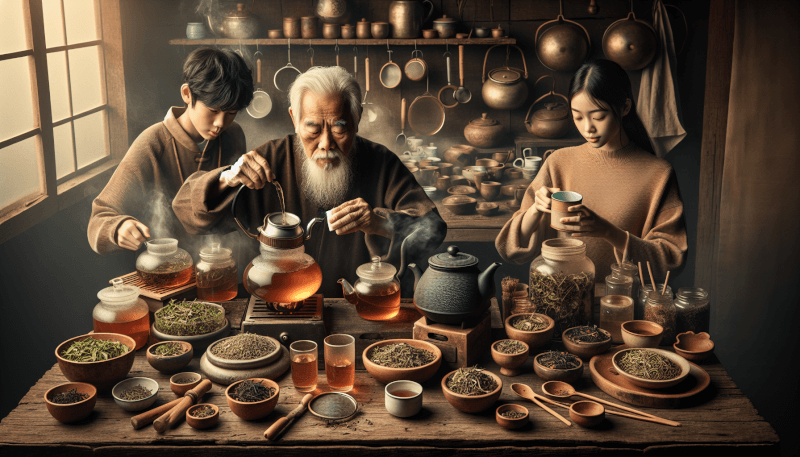
Serving Temperature
To fully enjoy the flavors and aromas of herbal tea, it is important to serve it at the ideal temperature. Different types of herbal teas have varying temperature requirements for optimal enjoyment.
Ideal Serving Temperature for Different Teas
As a general guideline, delicate herbal teas, such as chamomile or lavender, are best served at a temperature of around 175°F (80°C). Robust herbal teas, like hibiscus or ginger, can be served slightly hotter, at a temperature of around 195°F (90°C). However, personal preference plays a significant role, and you can adjust the serving temperature according to your taste.
Heating or Cooling Techniques
To achieve the ideal serving temperature, you can use various heating or cooling techniques. If your tea is too hot, you can allow it to cool for a few minutes before serving. Conversely, if your tea has cooled too much, you can gently reheat it on a stovetop or in the microwave. Be cautious not to overheat the tea, as this can alter the flavors and make it bitter.
Enhancing Flavor
While herbal teas are delicious on their own, you can enhance their flavors by adding sweeteners, citrus, spices, or other ingredients. Experimenting with different flavor combinations can elevate your tea-drinking experience.
Using Sweeteners or Syrups
Adding a touch of sweetness to your herbal tea can enhance its flavor profile. Honey, agave syrup, or stevia are popular natural sweeteners that complement the taste of herbal teas without overpowering them. Adjust the amount of sweetener according to your preference and enjoy a subtly sweetened cup of tea.
Incorporating Citrus or Spices
To add a refreshing or spicy twist to your herbal tea, consider incorporating citrus fruits or spices. Slices of lemon, lime, or orange can brighten up the flavors and add a zesty note. Additionally, spices like cinnamon, ginger, or cardamom can provide warmth and depth to your herbal tea. Experiment with different combinations to find your favorite flavor infusion.
Experimenting with Other Ingredients
If you’re feeling adventurous, you can experiment with various other ingredients to create unique flavor profiles. Fresh herbs like mint, basil, or rosemary can add a refreshing twist to your tea. Edible flowers, such as rose petals or lavender buds, can provide a floral aroma and delicate flavor. Get creative with your ingredients and discover new tastes that tantalize your taste buds.
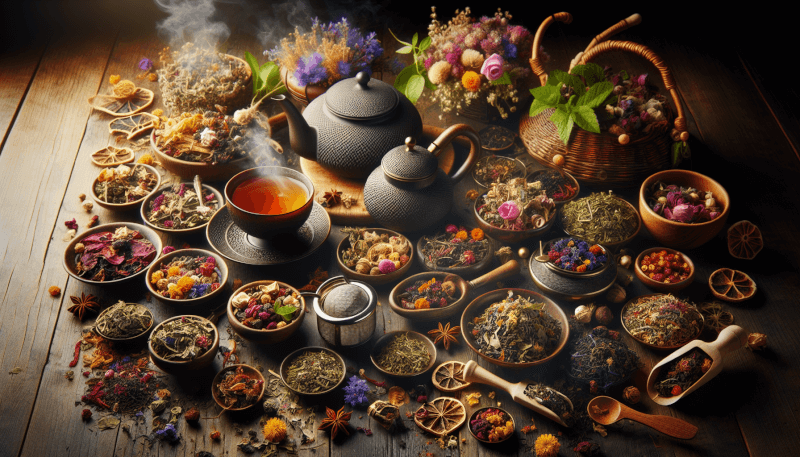
Storage Tips
Properly storing dried tea leaves is essential for preserving their freshness and aroma. Follow these storage tips to ensure that your tea stays flavorful for an extended period.
Properly Storing Dried Tea Leaves
Store your dried tea leaves in an airtight container to prevent exposure to moisture and air. It is best to use a container that is opaque to protect the leaves from light, as exposure to light can cause the tea to lose its flavor faster. Keep the container in a cool and dry place, away from direct sunlight and strong odors, to maintain the quality of the tea leaves.
Preserving Freshness and Aroma
To preserve the freshness and aroma of your tea, avoid frequent opening of the storage container. Each time the container is opened, air and moisture can enter, compromising the quality of the tea leaves. Only take out the amount of tea leaves you need for each brewing session to minimize exposure to air.
Additional Tips and Considerations
When it comes to brewing herbal tea, there are a few additional tips and considerations to keep in mind to enhance your tea-drinking experience.
Understanding Brewing Time
In addition to steeping time, be aware of the overall brewing time. The brewing time includes the steeping time as well as the time it takes to heat the water, prepare the tea leaves, and serve the tea. Knowing the total brewing time will help you plan and enjoy a perfectly brewed cup of herbal tea.
Exploring Different Tea Recipes
Don’t be afraid to venture beyond traditional herbal tea blends and explore different tea recipes. Experiment with combining different herbs, fruits, and spices to create your unique tea blends. Create a repertoire of refreshing iced teas, comforting hot teas, or even herbal tea cocktails to suit different occasions and moods.
Adapting to Personal Preferences
Remember that brewing herbal tea is a personal experience, and it’s essential to adapt the brewing process to suit your taste buds. Adjust the steeping time, water temperature, or quantity of tea leaves to achieve the desired strength and flavor profile. Take note of your preferences and make adjustments accordingly to consistently enjoy a cup of herbal tea that is perfectly tailored to your liking.
Considering Health Benefits
Apart from the delightful taste, herbal teas offer various health benefits. Consider the therapeutic properties of the herbs you are using and choose blends that align with your wellness goals. Whether you are seeking relaxation, digestion aid, or immune support, there is likely an herbal tea blend that can cater to your needs. Research the potential health benefits of different herbs and incorporate them into your tea-drinking routine.
In conclusion, brewing a delicious cup of herbal tea is an art that requires attention to detail and a bit of experimentation. By choosing high-quality herbs, properly preparing the tea leaves, and understanding the water temperature, steeping time, and infusion techniques, you can craft a cup of tea that is flavorful, aromatic, and tailored to your personal preferences. Don’t be afraid to get creative with flavor enhancements or explore different tea blends and recipes. With practice, you can become a master herbal tea brewer and indulge in the multitude of benefits that herbal tea has to offer. Cheers to a delightful tea-drinking experience!

